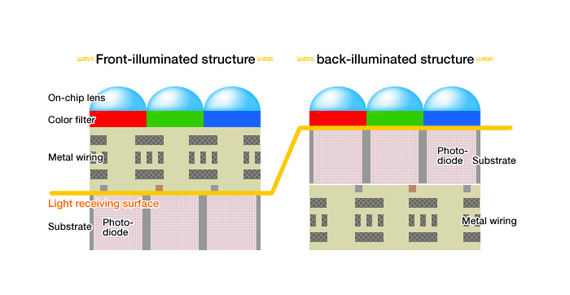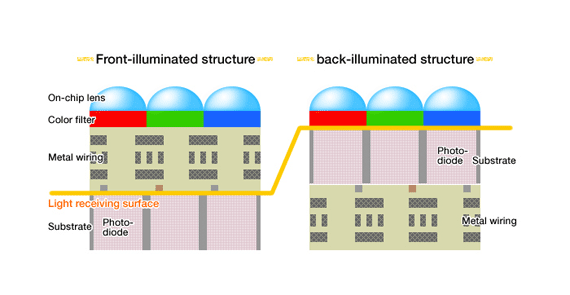A definition of Backlit sensor - SPOTLIGHT
On a standard sensor, the wiring and transistors needed for a sensor’s operation are built so they sit above the light-sensitive photodiode. This construction can prohibit all the incoming light from reaching the photosite – particularly light entering at an oblique angle. Less light results in smaller ratio of light to unwanted signal, which increases image noise. By changing the sensor’s construction, so the photodiodes are illuminated from the back of the silicon substrate rather than in front of it, the sensor captures light more effectively. And, as the wiring’s thickness is less relevant, it’s possible to incorporate more functionality without compromising the sensor’s light-gathering ability (to enable, say, faster burst rates).
Toshiba and Sony are just two companies to have developed such sensors, and each claims that they are 40-60% more efficient than comparable front-illuminated types. Several compacts now feature the technology, while cameraphones and video cameras should also benefit from their use. As image noise is one of the greatest problems for small-sensor cameras, such technology employed as standard will likely raise the bar for the performance of future compact models. 





